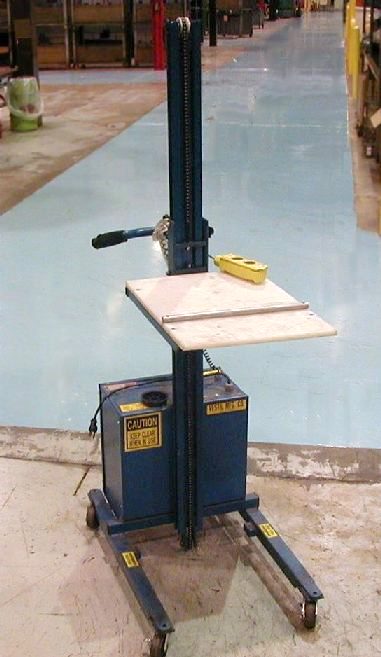 |
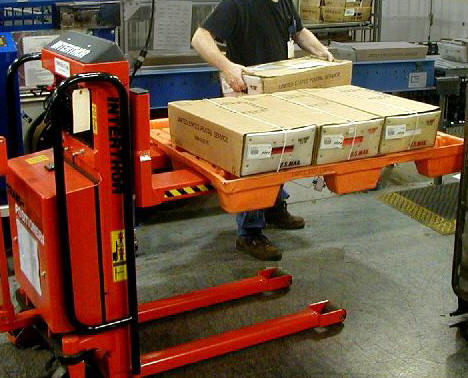 |
| Lightweight | Full pallet sized |
Principles affected
Related pages
Material handling
Workstations
Background
A new type of material handling device has recently become available that combines the capabilities of a cart with those of a power lift. These devices can be easily pushed by hand to fetch materials and then used as part of the workstation to position the materials at an efficient and safe working height.
There is no standardized terminology for these devices. They can be called portable pallet lifts, combination pallet jacks/power lifts, or simply transporters. In this solutions knowledge-base, they are usually referred to as lifter-transporters.
Objectives
Place items at good working height. Eliminate lifting and carrying when transporting items.
Ideas and Options
Lightweight
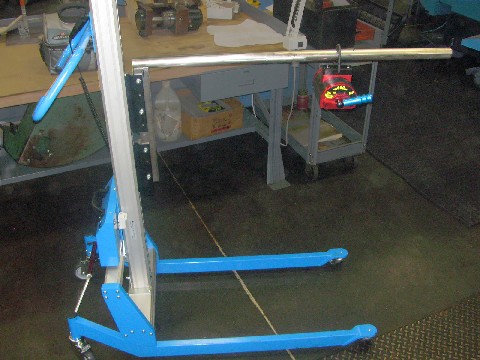 |
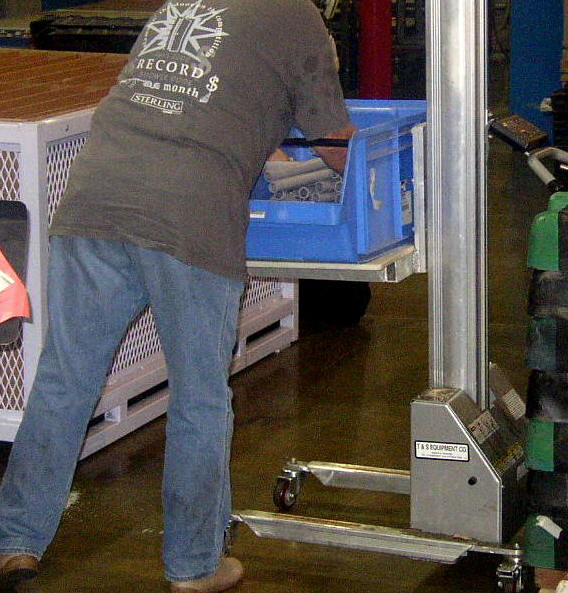 |
| Lightweight unit with pole | Lightweight unit with shelf |
Lightweight versions of lifter-transporters are very maneuverable and, depending upon the model, involve only a small footprint. The mast provides an excellent range of height adjustment, from floor level to 6-10 ft.
Movement across the floor is manual, but vertical elevation is usually powered. Versions of these devices with manual cranks or pumps are available and helpful in tasks where the need to change heights is minimal. However, in high volume operations and/or when heights are changed frequently, the powered versions are usually better.
Vendors include www.ergotechinc.com, www.vestilmfg.com, www.alumalift.com, www.roni.com,www.ergodynamics.com, and www.prestolifts.com.
End effectors
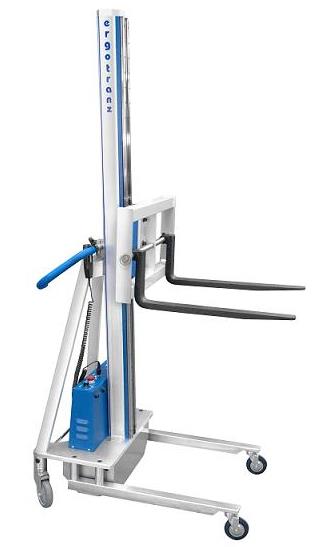 |
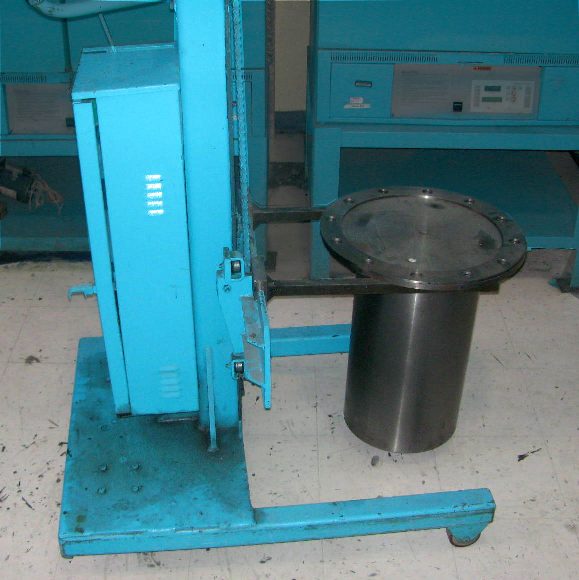 |
| Adjustable width forks | Thin, customized forks |
A great advantage of these devices is the ease in which different end effectors can be developed for handling a wide variety of materials. Many kinds are commercially available, including traditional forks. (See also Machine loaders [future].)
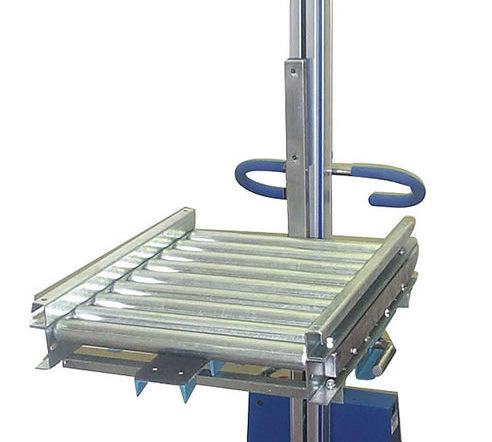 |
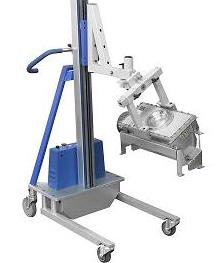 |
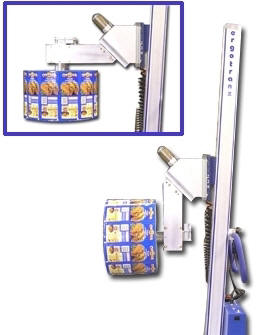 |
| Examples of end effectors (all from www.ergotechinc.com) | ||
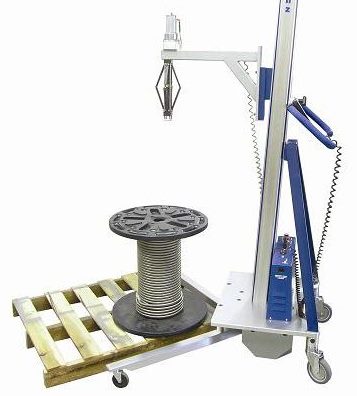 |
| V leg style for pallets |
Different leg styles are available on some models, such as a V orientation to provide a closer fit for pallets (also from Ergotechinc)
Pallet sized
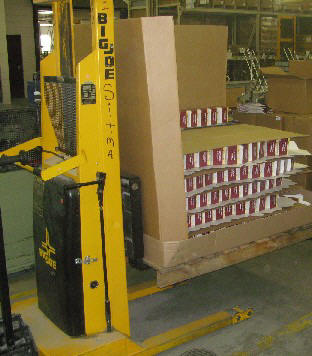 |
 |
Larger lifter-transporters for full pallets, capacity in range of 3500 lbs, depending on model.
Heavier versions of lifter-transporters are designed to handle full pallets. Again, these units are handled manually (very similar to that of a standard manual pallet jack), but are usually powered for height adjustment. As with the lighter versions, manual pumps and cranks are available that can be adequate in some applications.
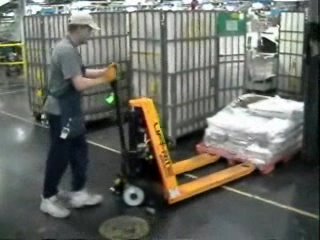 |
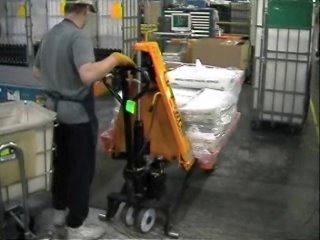 |
| In low position, like standard manual pallet jack | Easily powered up to good lifting height |
If a person can push a pallet jack, they can push this type of device. Once in position, the units can be powered up and down to achieve proper working height.
 |
 |
| Before: Bending to lift | After: Working off of the lifter-transporter |
In the task shown above, a quantitative study showed that this pallet lift reduced cycle time by 15-20% and strain on the lower back by 66%.
An additional advantage is that employees can exchange their own pallets as needed, without needing to wait for a forklift truck. Thus, wasted time is reduced.
Types of front end supports
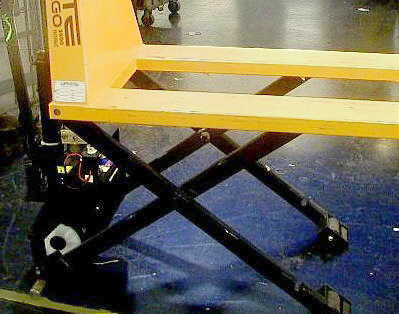 |
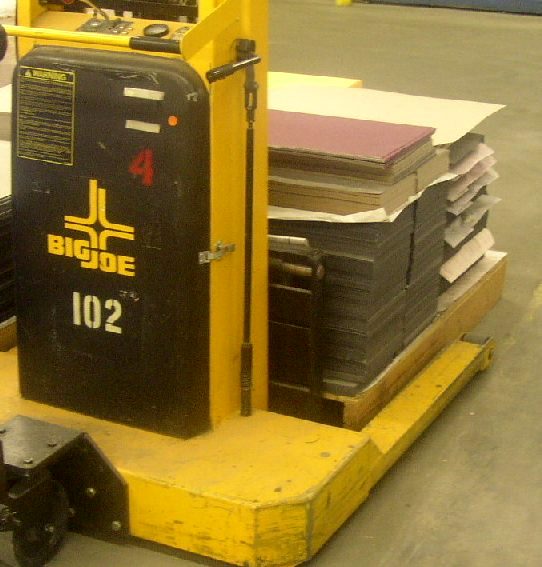 |
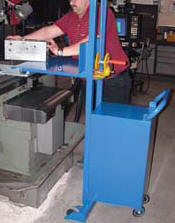 |
| Front legs | Straddle | Counter-balanced (Vestil) |
An important consideration in the selection of a lifter-transporter is the way in which the load on the extended forks is supported. There are three common ways to provide this support, each with advantages and disadvantages:
- Front legs tend to be the least costly of these three variants. However, they require open-bottom pallets, which can add costs or may not be feasible at all.
- The straddle type surrounds the pallet or container. It can be used with any style of pallet, but is wider and takes additional room to use.
- Counter-balanced types can lift any style of pallet, but are generally more expensive and heavier to maneuver.
